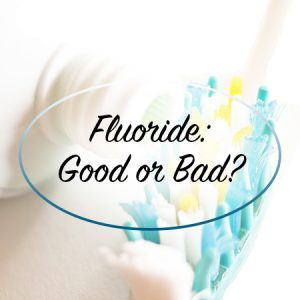Fluoride: Good or Bad?
 According to the Centers for Disease Control and Prevention, the fluoridation of drinking water is ranked among the ten greatest public health achievements of 20th century America. However, a quick search of the internet tells us that fluoride is actually toxic if ingested in large enough quantities. So which is it? Do the health benefits outweigh the negatives of fluoride in toothpaste and drinking water? We at Spring Creek Dentistry know that Spring folks care a great deal about their health, so we’ve put this article together to examine the facts and help you come to your own decision. As always, we are happy to answer any questions you might have, so feel free to give us a call!
According to the Centers for Disease Control and Prevention, the fluoridation of drinking water is ranked among the ten greatest public health achievements of 20th century America. However, a quick search of the internet tells us that fluoride is actually toxic if ingested in large enough quantities. So which is it? Do the health benefits outweigh the negatives of fluoride in toothpaste and drinking water? We at Spring Creek Dentistry know that Spring folks care a great deal about their health, so we’ve put this article together to examine the facts and help you come to your own decision. As always, we are happy to answer any questions you might have, so feel free to give us a call!
Why Use Fluoride in the First Place?
In order to understand the controversy, we must first to understand what led to putting fluoride in toothpaste and water. Even today, dental caries (tooth decay) is considered the most prevalent chronic disease in children and adults. With that in mind, it’s not hard to understand why Grand Rapids, Michigan took a leap in 1945, becoming the first city in the world to fluoridate its drinking water supply. The hope was that fluoridation would dramatically reduce the amount of tooth decay in children. After 11 years, the National Institute for Dental Research validated that hope, announcing that fluoridation had coincided with a 60% drop in the rates of tooth decay. Fast forward to 2000 and roughly half of the country’s water supply is fluoridated.
How Does Fluoride Work?
Fluoride aids in the protection of teeth by preventing decay in two ways:
- Fluoride keeps plaque-based bacteria from producing decay-causing acid.
- Fluoride remineralizes, or repairs, areas of teeth that have been damaged by decay.
Is Fluoride Dangerous?
As Mark Twain is famous for saying, “too much of anything is bad…”, that is certainly true for fluoride. Too much fluoride can cause dental fluorosis, a condition that permanently stains and pits the enamel of the teeth. More serious complications, such as skeletal fluorosis, can occur as well. In extremely high doses, fluoride can even cause death. The important thing to know is that fluoride’s popularity has led to its inclusion in more than just water and toothpaste – namely juice, soda, food, and pesticides.
Moderation is Key
As long as fluoride doesn’t exceed the EPA regulated 4mg/L, research suggests that the benefits outweigh the potential complications. The trick is monitoring your fluoride intake from all sources, not just water and toothpaste. However, there are plenty of anti-fluoride activists that advocate for removing fluoride from all sources.
What’s [DR. NAME]’s Position on Fluoride?
Like most other dentists, Dr. Ryan Oakley recommends that Spring residents use fluoride toothpaste, but reminds us to rinse thoroughly. If you have any questions about fluoride or would like to chat about anything dental, don’t hesitate to give Spring Creek Dentistry a call!
Sources
http://health.howstuffworks.com/wellness/oral-care/products/how-much-fluoride.htm
http://health.howstuffworks.com/wellness/oral-care/products/fluoride-free-toothpaste.htm
http://www.cdc.gov/mmwr/preview/mmwrhtml/00056796.htm
http://www.nidcr.nih.gov/DataStatistics/FindDataByTopic/DentalCaries/
http://www.goodreads.com/quotes/54577-too-much-of-anything-is-bad-but-too-much-good
